It was the 22nd of September, 2017, a Friday and I was home. A friend of mine and I had decided to Skype to discuss something. Towards the end of our meeting, she said that she had started working on a bullet journal. She was sharing her computer screen so she googled bullet journal on Google Images and that was the first time I saw the tremendous amount of effort people have put into personalizing their bullet journal. I felt very excited, spent a good chunk of Friday surfing the Internet on what it was, how to do it and the best resource came from Ryder Carroll’s website that explained the system. He invented it and it was not surprising that he could explain it so seamlessly.
I always loved doing crafts and when I moved to Canada, with Michaels down the road, I got into Scrapbooking. I bought many crafty things and about three years later, I have still not used up all of it. I could not stick to scrapbooking, however, because it needed to have a theme and pictures and with school work, I did not have as much time.
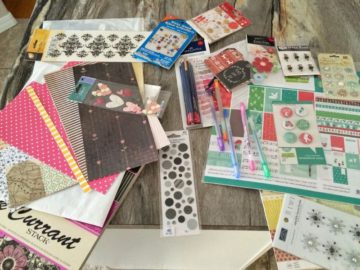
Bullet journaling gave me the way to keep the artsy side of me, combine it with the writer and planner side of myself. And I discovered washi tapes.
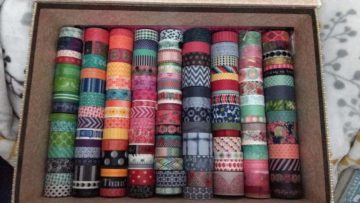
I still use a Google Calendar for classes and work meetings and blocking time off. However, my bullet journal (referred to as BuJo, sometimes) I carry around everywhere. I first want to show you how it developed in the last two months and then I will talk about how it changed me.
The Journey of My Bullet Journal
My (first (because I already bought the second one)) is a white Leuchtturm 1917 dotted paper A5 journal. What I store in it consists of five categories (a couple pages might fall in more but I mention the main one here):
- Collections: — books I have read since I started the journal (school related as well as pleasure reading), 10Q answers that I want to remember, Study Strategies, Level 10 Life, Random Quote pages — These are stand alone pages that I refer to from time to time.
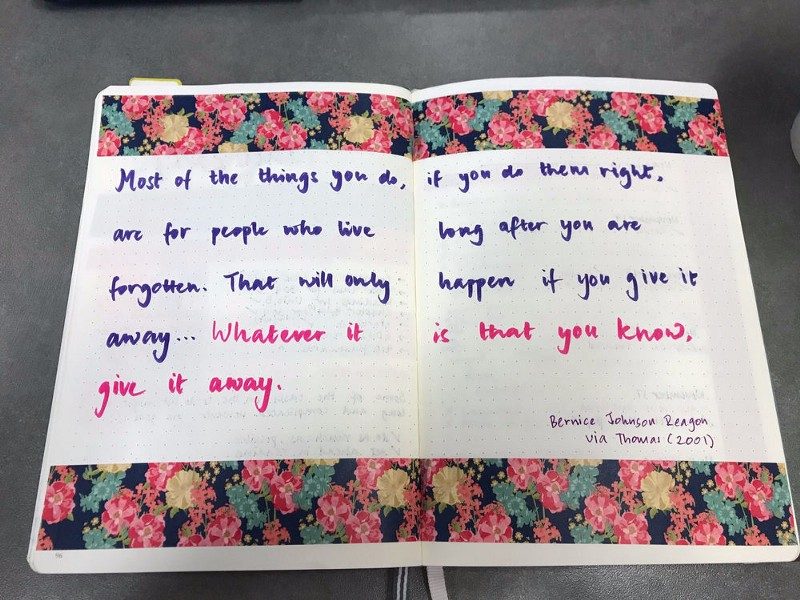
- School related: — assignment tracker, exam tracker, assignment planners, exam study deadlines — These are, as you may have guessed, to keep track of study related deadlines and plans on when to start and complete tasks. If you search student bullet journal on Pinterest, lots of ideas will come up.
- Profession related: — Teacher Growth Plan, Professional Website, First Teaching Experience Reflection, Professional reflection — These pages are dedicated to my development as a professional. My Contexts of Education class also encourages daily reflections (that the instructor checks) and though I could possibly write the same thing in both places, I find that some thoughts are only for me. I didn’t have the Professional reflection section before November but I have particularly enjoyed writing in it.
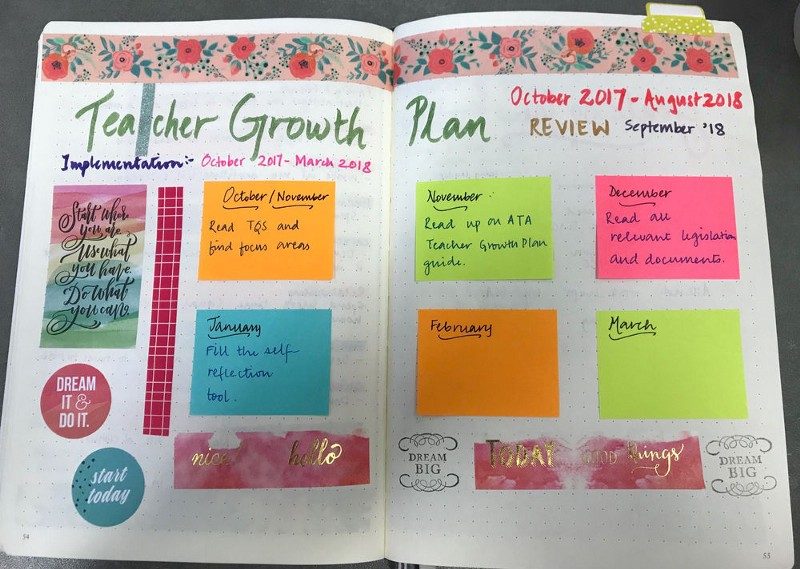
- Related-to-me: — Gratitude lists, Personal reflection, Christmas related pages, Habit tracker, Blog post planner. — I use a Habit tracker for each month and it changes with the month, how I did with the previous tracker. The Christmas gift ideas and budget are a great holiday planning tool.
- Goal tracking: — Monthly, weekly and daily tasks and appointments. — These layouts are to compliment my Google Calendar. The monthly one is highly useful for planning out larger projects or working towards long-term goals.

My Journey with my Journal
I have tried a number of task tracking techniques but nothing comes close to the creative and personal approach that bullet journalling provides.
How it helped me grow personally:
- Living document: My BuJo grows with me. It is what I want it to be and it houses my thoughts, goals, disappointments, mistakes and plans. It is a book I refer back to. One day will peruse through a whole bunch of them to compare my future self with the present 20 something. 🙂
- Confronting my perfectionist self: I want my journal to be the way I envision it. However, sometimes, I don’t write the correct spelling, use the right colors, draw the right picture or decide to stick loose sheets on my journal pages which turns out to be a huge mistake. If I did not consider my journal as a living document that houses my mistakes as well as my accomplishments, I would be dissatisfied with the mistakes I make and want to start over. By correcting the mistakes (with tape or another paper), I am learning to not beat myself up as much when I make mistakes.
- Learning what I am grateful for: My gratitude log for everyday lets me picks out the people (and sometimes things) in my life who made the day great. Steph Clarke said in her article on the Best-Self Journal how she once expressed gratitude for ibrophen that made her headache go away. I have done that too. “I am grateful for staying home — October 29, 2017.” Gratitude is definitely hard but I am starting to learn not only how thankful I am for my parents, friends, significant other, extended family and kitten, but also why I am thankful for them. They have given me so much and make everyday brighter by supporting and caring for me.
- Planning for later: There are ideas and projects that I want to bring into existence right away. However, there are priorities — school and part time work — that need time first. In the middle of November, I am already thinking of what I will do in my one week December holiday. I write that down in my BuJo and I know there is a place I can refer to and find my ideas again. If I think more in depth about an idea scheduled for later, I can add there.
- Continuing my hobbies: In retrospect, the reason scrapbooking was hard to keep up with was that it was a separate activity. It was not related to my day to day life. It was about special events. Bullet journalling lets me do scrapbooking on the days when I want to do it. I get to keep all my hobbies from reading to writing to decorating all in one place! I don’t have to give up any of them to spend time on my BuJo. Steph mentions the success of relating habits to something else here.
How it helped me grow professionally:
- Reflecting on my university classes: Making a habit of writing down something I learned from my university class of the day often makes me identify the strategies of my professors that I would like to use in my own classroom. This has also led me to connect the four courses I am taking towards one goal of self-improvement as a teacher. We are always encouraged to help other teachers and as professionals help in the growth of the community as well as our students.
- Understanding my biases: Already considering myself a teacher even though I do not have the certification to teach at school level has helped me focus on understanding my biases and opinions. It has also made me more aware of what is happening in the Education realm in Alberta. By knowing my biases and opinions, I am able to work on them, research them more and ultimately be more conscious.
- Coming up with action plans: There are responsibilities that I have/will be assigned and some that I have taken up on my own after volunteering with a school. I want to use my time effectively and design lesson plans and slides for courses I will teach, go through the curriculum and books I will be using, explore technologies and applications I can integrate into my classroom… the list goes on. Though cannot do them all right away, I can set up time in the future to do them. My Teacher Growth Plan is the best example of that. My BuJo is there to remind me.
- Getting used to wearing the Professional Hat: As teachers, we will always wear the Teacher Hat. In my Educational Policies course I have learned that even when I am not in the classroom, I will always be a teacher first and whatever I do will reflect on my profession. By reflecting on my development and what I am learning, I am getting used to wearing my Teacher Hat. There are other hats too that I wear but my Teacher Hat is the main one because even for the content I post online, I have to critically examine it and ensure that it is ethically correct.

- Identifying how it will help my students grow: In his TEDTalk on How to Lead An Intentional Life , Ryder talks about how the Bullet Journal came to be. He was a kid with Attention Deficit Disorder which means that he found it difficult to focus with the thousands of thoughts in his head. He developed Bullet Journaling when he grew older to help him focus. He says in the video how he wishes he had the knowledge when he was a young struggling kid. Every classroom today has some kids who have ether been coded with autism, have a learning disability or are just struggling in their own ways. As their teacher, I want them to take advantage of what I have learned with my experience with bullet journaling. If it helps them focus, let things go and maybe even record their teenage journeys then why not? I am sure there will be a time and place for this. This is another strategy in my toolbox.
Conclusion
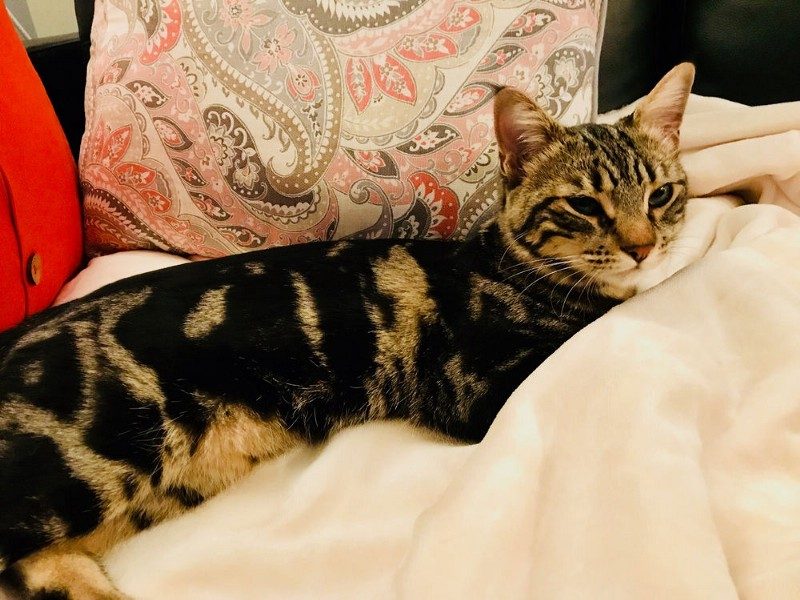
My kitten, Fiona, loves this blanket. If I am sitting close by, she will come sit with me on the blanket and calm down. She loves it. She kneads on it, sleeps on it, wants scratches and cuddles. It is her safe place. Quoting from a response of mine from a different post: “The bullet journal is my safe space in a lot of ways. It’s a record of my journey and every journey has its details, expectations, mistakes and corrections.”
I built my BuJo from scratch. Every page or spread I make in it is my own. Yet, I am not really doing anything new. Many other people have incorporated this system in their lives and done stellar things in it. I love the artistic ones but I see the appeal in keeping it simple. Here are some of my favorite examples from Pinterest:

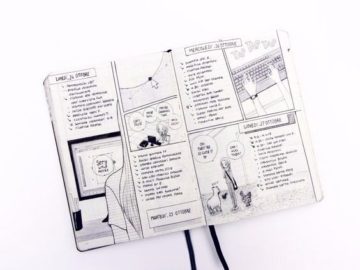
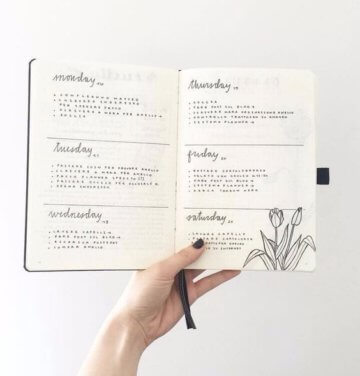
To end, I will continue to grow and my journal will grow with me. It will also help me grow as it let’s me access the past, things I want to do in the future and be the best version of me in the present. There are layers of me that I am now able to record them, reflect on them and change and grow with them.

Also published on Medium.

[…] of productivity. Looking back, I started considering myself a student of planning when I got my first bullet journal. It was going to be a creative outlet with goals. Since then, my bullet journal has gone through a […]